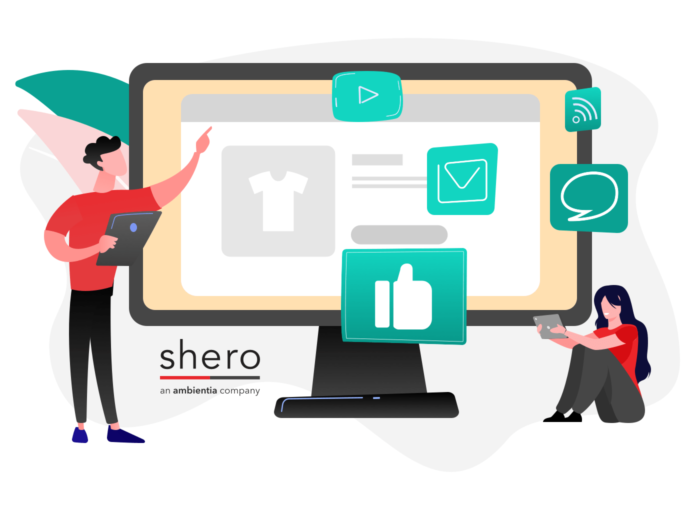Reach, build, and grow your business prospects with effective business-to-business (B2B) marketing best practices.
If you’re starting an eCommerce business — or are ready to pivot an existing one — but are unsure how to sell your products to other businesses, this guide is for you.
As an entrepreneur, you wear umpteen hats and have an unreal number of tasks to check off on your daily to-do list. And, yes, marketing your business is one of the most important.
After all, if you don’t have customers, you don’t have a business, right?
But, let’s face it, B2B marketing can be intimidating if you don’t know where or how to start.
In this guide, we will cover the fundamentals of B2B marketing:
Table of contents

What is B2B marketing?
Business-to-business, also known as B2B, refers to business transactions between companies. Business-to-consumer, or B2C, is where business transactions happen between a business and a consumer.
As you can see, the difference between the two is in who the customer is:
B2B: Customers are other businesses
B2C: Customers are individuals, families, or households
Business-to-business (B2B) marketing, then, is everything a company does, like sales, advertising, and promotions, to sell its products or services to another company.
Here are a few examples:
1. Manufacturers to wholesalers
Clothing manufacturers that sell to Alibaba or AliExpress
2. Wholesalers to retailers
A toy manufacturer that sells to Walmart
3. Utility companies to corporations
Southern California Edison sells power to AT&T
4. Service companies to service companies
A billing and coding service that sells to dental practices
5. Service companies to retailers
A digital advertising agency sells services to Target
This list is not exhaustive, but, as you can see, there are many types of business-to-business relationships. And there are just as many ways to market to them.
Now, let’s look at the differences between B2B and B2C marketing.
How is B2B Marketing Different from B2C Marketing?
While there are many differences between B2B and B2C marketing, understanding these differences will help improve how you market your products to the B2B market.
Here are a few key differences:
#1 Target Audience
The target audience is the most significant difference between B2B and B2C marketing. Some businesses only target consumers, while others target businesses exclusively. And some companies choose to target both.
While B2B marketing focuses on selling products and services to a company or an organization, B2C focuses on selling to an individual consumer or family making purchases for themselves or their households.
Your target audience will depend on your products and services and whether those products and services are a good fit for businesses, consumers, or both.
#2 Different Goals
B2B and B2C customers have different goals. B2B customers’ goals are for their business or organization, while B2C customers’ goals are for themselves. Because their goals are different, your marketing to them should be different, too.
Understanding your B2B customers’ goals and what’s needed to achieve them will help you market, sell, and service your customers more effectively.
Need help creating a digital strategy roadmap to success? Contact us for a free consultation.
#3 Decision Making and Decision Makers
B2B and B2C customers approach buying decisions differently. B2B customers are motivated by business goals, so buying is a business decision that impacts the entire business. Additionally, buying for a business requires approval from many stakeholders, and there’s usually a formal purchase-approval process. Conversely, B2C customers are motivated by their personal goals, and their buying decisions only affect the individual or their household.
#4 Long Buying Cycle vs. Short Buying Cycle
B2B and B2C customers make decisions differently, and the time to purchase is different, too. And while B2B and B2C customers go through similar stages in the buying cycle — the awareness, consideration, and decision-making stages — the length of each stage and, consequently, the respective buying cycles are also different.
For the B2B customer, the buying cycle is long (ranging from months to years) and requires a lot of nurturing and relationship building to get the sale. Additionally, B2B customers require a lot more upfront investment — especially in marketing resources. With B2B customers, expect to do a lot of handholding, educating, and nurturing during the sales journey.
Typically, B2C customers have shorter buying cycles, from hours to weeks and sometimes months. Of course, the buying cycle is longer with high-ticket purchases like cars and homes. Since B2C customers have fewer people involved in purchasing decisions and are buying lower-ticket items that don’t require as much research or co-approvers, the buying cycle is much shorter than with B2B customers.
#5 Different Marketing Strategies
Since B2B customers are in business to make money, money is not only the motivation: it’s also the goal. Can your product or service, directly or indirectly, help them make or save money?
B2C customers, on the other hand, want to know how your product or service will make their day-to-day lives better, easier, or more enjoyable. Will your product or services help them save time and money or make them feel good?
Understanding the differences, benefits, and drawbacks between B2B and B2C marketing will help you choose the best marketing strategy for your business.
How to Create a B2B Marketing Strategy
A marketing strategy is the link between the business’ goals and the marketing tactics used to achieve those goals.

Here are six must-haves in a solid marketing strategy:
1. Define Goals and Objectives
Before mapping out your marketing strategy, clearly define your objectives, goals, and whys. Where is the business currently? And where do you want to take it? Writing down goals makes them real — and achievable. Make sure these goals align with your business goals.
2. Size Up the Competition
How well do you know your competitors? The only correct answer: exceptionally well. The goal of competitive analyses is to identify the best ways to drive business away from the competition to you ethically. The goal: gain market share and increase sales, revenue, and profit. May the best competitor win.
3. Get Intimate with Your Target Audience
The best marketing strategies start with laser-sharp focus on who you’re targeting. Create personas or avatars to help solidify your understanding of your prospects and customers. That way, you can create more effective marketing strategies and initiatives.
4. Create a Strategic Marketing Roadmap
A roadmap is a visual representation of your marketing strategy. A good roadmap not only details what you’re going to do but also has timelines for when things get done. Clear start dates, milestones, and deadlines makes for an effective roadmap. Because they are visual tools, roadmaps can help initiate discussion, improve communications, and generate ideas.
5. Measure What Matters
What does success look like for your business? Goals are part of your success, and you should track progress toward your goals. But don’t get bogged down in tracking the wrong metrics. Track what matters and what matters is progress toward your goals. Everything else is busy work — and unproductive.
B2B Marketing Best Practices
There are wrong ways to do B2B marketing, but there’s no one “right way.” Instead, best practices guide you in your B2B marketing efforts.
Here are six B2B marketing best practices you can use today:
1. Align Business Goals and Marketing Goals to Customer Goals
Your marketing strategy should align with your business goals, but it should also align with your customers’ goals. Listen to your customers and give them what they need to achieve their goals. Helping them helps you.
2. Develop Multi-Channel Marketing
In today’s digital world, multi-channel marketing is not an option; it’s a necessity. Do you have to be on every channel from the start? Absolutely not. Instead, focus on the few that (1) your best prospects use and (2) where you can have the most impact. Take content marketing, for example, where you create content once but repackage and distribute it in multiple channels: your website, social media, podcasts, and eNewsletters.
3. Build Trust and Relationships Through Social Media
Customers don’t want to be sold from the onset — especially if they’re unaware of your brand. Instead of selling a prospect, engage with them socially. Provide exceptional value to build relationships based on authentic, trustworthy interactions. Try building small, tight-knit communities where you can earn respect, trust — and, hopefully, a loyal, engaged following who become customers.
4. Create a Money-Making eCommerce Site
Revenue-generating eCommerce sites have a few things in common: they’re (1) easy to understand, (2) easy to use, and (3) easy to transact with. At minimum, to be transactional, your eCommerce site should have the three Cs:
Clarity
Customers want simple, easy-to-navigate and transact sites. So, every element — from the copy to CTA button text — of your eCommerce site needs to be clear and easy to understand. If it lacks clarity, you risk losing customers.
Credibility
Customers need to trust the eCommerce sites they are transacting with. Your site must have all the trust signals from SSL certificates to customer reviews. Customers need to feel comfortable sharing their information and money.
Correctness
The content on your eCommerce site — from category pages to product descriptions to the prices and the promotions — should be clear, complete, and correct. Confusing, incomplete, and inaccurate information causes customer frustration and can destroy your brand.
5. Provide Exceptional Service Throughout the Sales Journey
Acquiring new customers is hard and extremely expensive compared to retaining them. Make it easier by providing exceptional customer service to all customers, from pre- to post-sales. Outstanding customer service should be part of your branding and customer retention strategies.
How to Measure B2B Marketing Performance?
1. Set Realistic, But Concrete Goals with Definitive Deadlines
Clearly defined goals are not an afterthought. Instead, they require upfront work and planning. Deadlines make goals, goals. If you don’t have deadlines, you’re just hoping, wishing, and praying for business success. Be realistic about what you can achieve but set realistic goals with concrete deadlines.
2. Determine Your Key Performance Indicators (KPIs)
KPIs are the metrics that help your business stay on track and move the ball forward so you hit your target. If your goal is to make 500K by EOY, then your KPIs should help you track performance to get there.
3. Setup Reporting to Analyze Performance at a Regular Cadence
As the saying goes, “What you don’t measure, you can’t manage.” Reporting and performance management go hand in hand. To succeed in B2B marketing, you must regularly track, analyze, and report on performance.
4. Test, Optimize, Test, and Test Again
Most of the time, especially in the beginning, you won’t hit your marketing goals out the gate — and that’s okay and expected. Marketing is about planning and optimizing your way to success. Test as much as you can, as frequently as you can. See what works; fix what doesn’t. Rinse and repeat.
Successful B2B Marketing Campaigns
Now that you understand B2B marketing a little better, let’s look at successful B2B eCommerce campaigns:
#1 Rubik’s Cube Killed the Online Game by Doing This One Thing
Rubik’s Cube wanted to take its business online but needed a flexible solution that would allow them to scale and expand into new countries. The solution? Magento Commerce with phenomenal results. Within four months of launch, Rubik’s Cube increased its U.K. revenue by 150% and doubled its conversion rate.
#2 Edible Arrangements Increased Same-Day Sales with This Website Change
Even though Edible Arrangements has offered same-day deliveries for a long time, their customers weren’t taking advantage of it. To incentivize customers to use same-day delivery, they added a large banner with a time-to-left-to-order countdown timer. This one change to their website immediately increased same-day orders by 8%.
#3 CompanyFolders Significantly Increases Online Quotes with a Simple Change
With over 15 million product combinations, the CompanyFolders’ online quoting system was understandably complicated —but that had to change fast. Instead of a single, cumbersome form, CompanyFolders redesigned its form into an easier, multistep process. The result? A 68% increase in total quotes.
Conclusion
Forrester Research projects that the U.S. B2B eCommerce market will grow to 1.8 trillion by 2023. So, while B2B eCommerce marketing has its challenges, the opportunities are equally abundant. With these opportunities in mind, develop a B2B marketing strategy that gets you to your goals as quickly and efficiently as possible.
Need help with your B2B marketing efforts? Contact us for a free consultation. At Shero eCommerce, we’re here to help you achieve your business goals.
Gentian, CSO and co-founder of Shero Commerce, guides the company and client digital strategies. He's an expert in technical SEO, Inbound Marketing, and eCommerce strategy.






